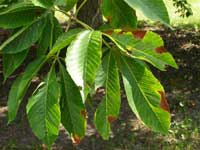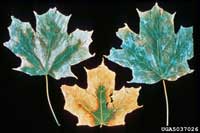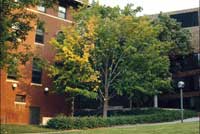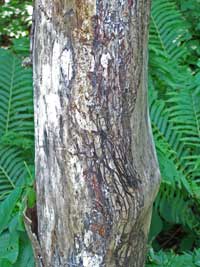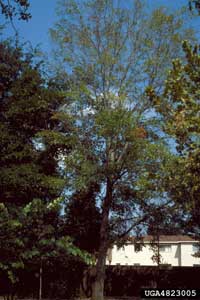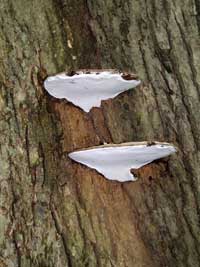Extension > Garden > Diagnose a problem > What's wrong with my plant? > Deciduous > Buckeye > Leaf edges brown, center remains green
Buckeye > Leaves > Leaf edges brown, center remains green
1 of 4
Leaf scorch
- Leaf margins turn reddish brown and may curl
- More noticeable in last half of summer
- Most common on leaves exposed to sun and wind than sheltered leaves
- Severely affected leaves drop prematurely
- More information on Leaf scorch
2 of 4
Verticillium wilt
Verticillium dahliae and V. albo-atrum
- Leaves are small and yellowed in chronic infections
- Leaves turn brown from the edges and tips, wilt and die in severe infections
- Leaf symptoms are often seen on only one or a few random branches in the canopy
- Dark olive to gray streaks are often visible in the sapwood if the bark is peeled back, appearing as rings or arcs in a cross section
- Symptoms may develop over a single season, or over several years
- More information on Verticillium wilt
3 of 4
Armillaria root rot
Armillaria spp.
- Infected trees have poor growth, dead branches in the upper canopy, undersized and/or yellow leaves
- Flat white sheets of fungal growth (mycelial fans) between the bark and sapwood at the base of infected trees
- Thick black, shoestring-like fungus can sometimes be seen under the bark, around roots and in the soil around the base of the tree
- Wood is decayed, white, soft and spongy; this may extend from the base of the tree well up into the trunk
- Trees frequently break or fall over in storms
- Clusters of honey-colored mushrooms may grow at the base of the tree in fall
- More information on Armillaria root rot
4 of 4
Ganoderma root rot
Ganoderma applanatum
- Leaves are small, turn yellow and drop prematurely
- Canopy appears thin with few leaves and multiple dead branches
- Fungal conks, semicircle shelf fungi, can be found from the base of the tree up to 3 feet high on the trunk
- Conks are reddish brown and shiny on top, white and porous underneath, a rim of white may be visible on the edge of the growing conks
- Infected wood at the base of the tree is white, soft, stringy or spongy
- Infected trees frequently break or fall over in storms
- More information on Ganoderma root and butt rot





